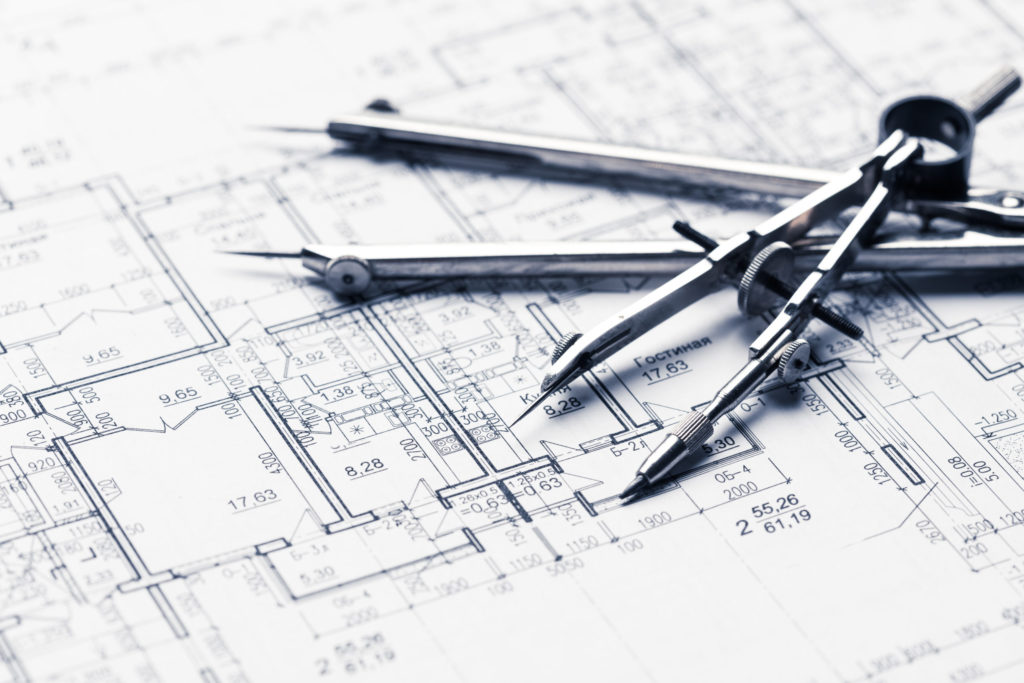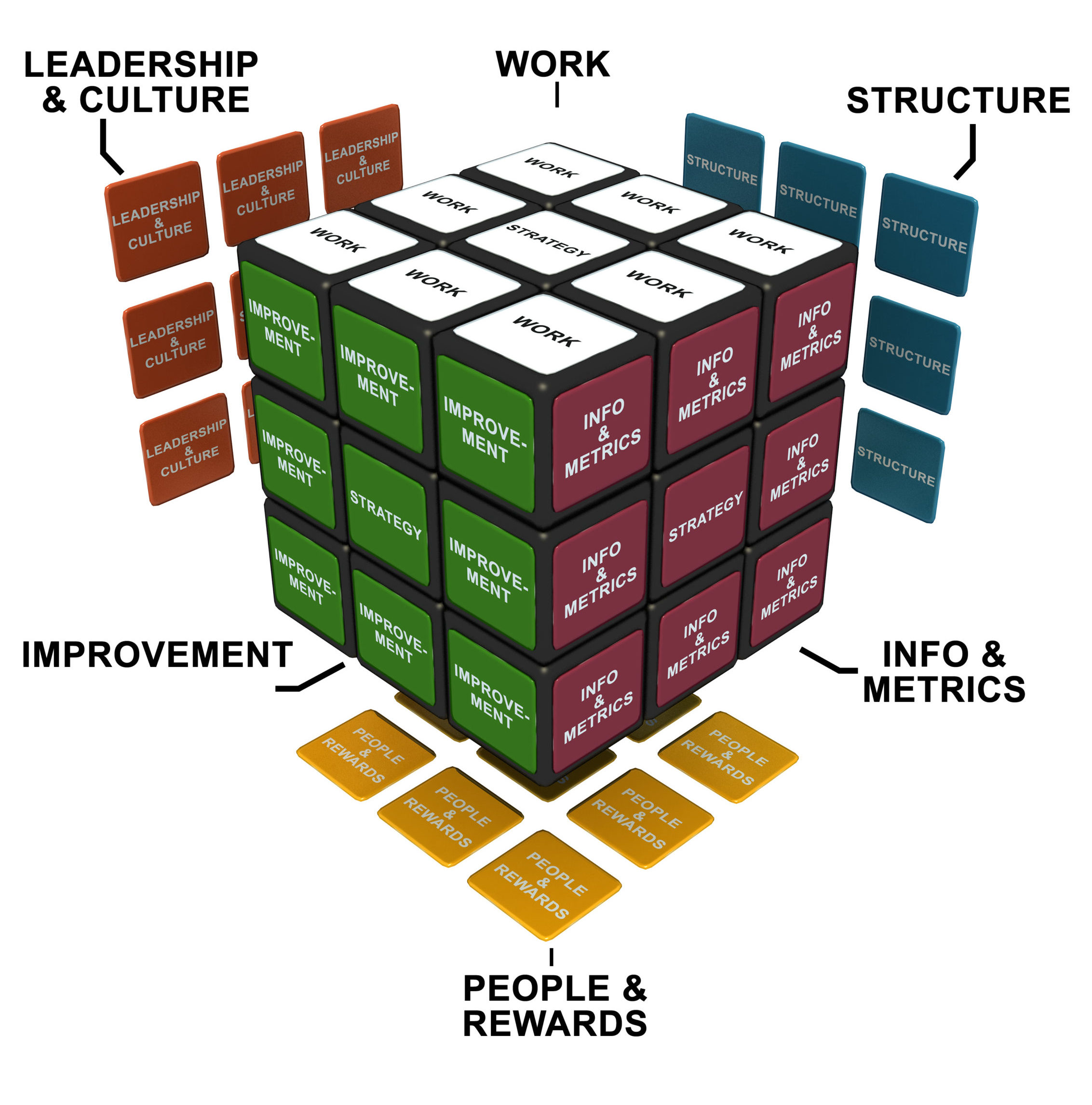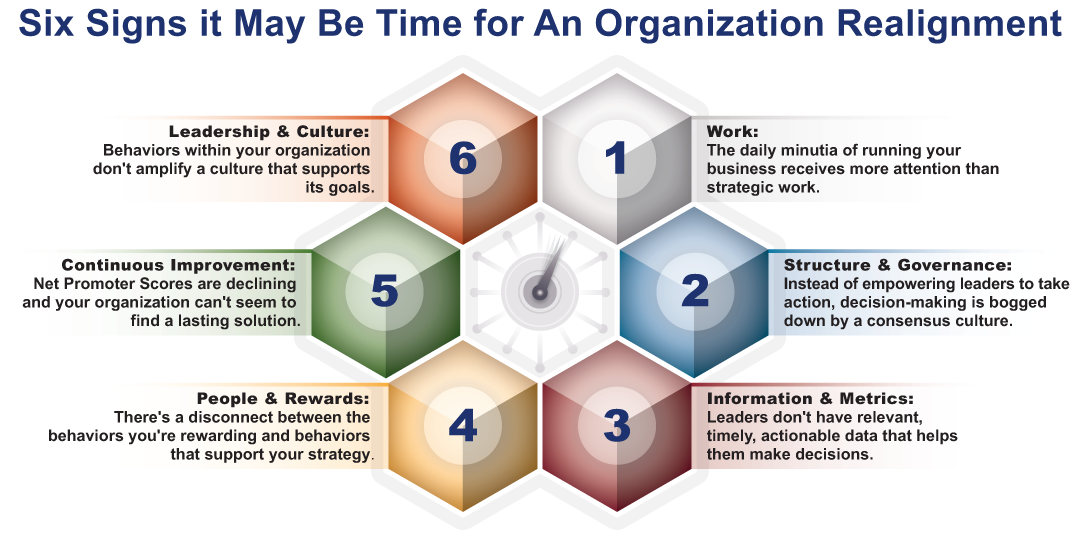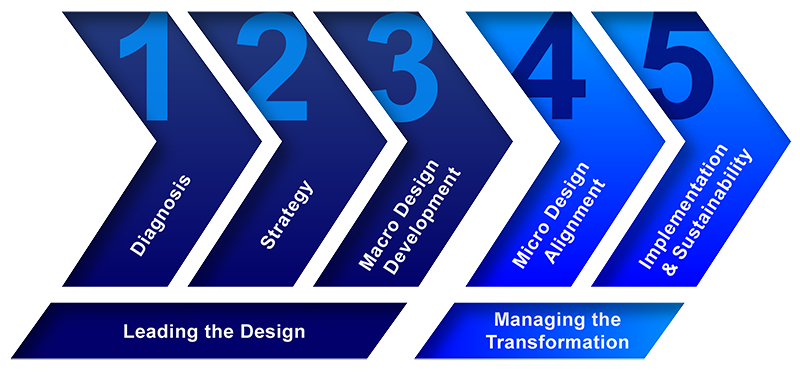Organizational Design - What is it?
What is organizational design, also referred to as organization design? It might be best understood by imagining the process of building a house. You show up at the construction site to meet with your contractor, and he confidently shows you the materials he’s assembled.
“Here are the bricks and the cement," he says. "The windows are over there, and you’ll notice we’ve got the pipes ready for plumbing.”
“Great,” you say. “Mind if I take a look at the blueprints?”
“Blueprints?” he replies, confused. “No need for blueprints. I’ve got all the supplies I need – how hard can it be to put them together and end up with a house?”
Worried? You should be. You might end up with something that looks like a house, but would it function correctly year after year? Would it hold up against weather and age, or even the wear and tear of daily living?
The same holds true with an organization. A business may have many of the components it needs to win – a bright leader, motivated employees, an innovative product – but without a strong design, the odds are that it will fail to achieve lasting success.

Many people confuse a business model with an organization design, but in reality, the two serve different purposes.
Business model: What you offer your customers, and how you differentiate yourself from the competition.
Organizational Design: The blueprint of how you will fulfill that objective.
Organizational design is the process of designing your organization to achieve desired results by aligning key elements of the organization: work processes, structure and governance, information and metrics, people and rewards, continuous improvement and leadership and culture, in a way that supports your strategy. At AlignOrg Solutions, we like to think of it as a Rubik’s Cube. If you focus only on solving one side of the cube, you'll leave the others scrambled. The same holds true for organizational alignment. Focusing only on fixing one component of the organization often creates unintended consequences for the others, leaving you further from achieving your goals than when you started.
If you've ever learned how to solve a Rubik's Cube, you'll know that the secret is to follow a tried and tested method, focusing on all sides of the cube. When tackling the complicated puzzle of organizational alignment, you'll also need a carefully planned and time-tested process - one that involves every aspect of the organization. At the center of each side of the cube is the organization's strategy, acting as the anchor that guides and ties all of the elements together.
Understanding the Six Sides of the Organizational Cube
Work Processes: Work processes are the daily tasks employees perform to create and deliver value. To create results, leaders must identify and prioritize the work processes that create marketplace differentiation.
Structure & Governance: An organization's structure and governance must be shaped in a way that allows you to deliver on your differentiating capabilities and implement your strategy. Rather than consider structure and strategy as two separate issues, leaders should focus first on strategy and then structure the organization to support it.
Information & Metrics: Information systems should be designed to ensure that the right information - that which allows leaders to solve critical problems or make decisions that impact strategy - gets to the right people at the right time. Metrics should provide data that helps leaders align their business model with organizational priorities.
People & Rewards: This system should be aligned to motivate employees and maximize their potential while supporting the organization's strategic goals. For example, an organization with a strategy that focuses on creating differentiated customer experiences may decide to provide extra training to their public-facing employees.

Continuous Improvement: To keep pace with changes in the marketplace and within the organization, an organization must have a system to continually review and realign all systems within it. Leaders should keep a "big-picture view" of the organization, frequently examining whether their organization choices are optimally aligned to achieve their goals.
Leadership & Culture: The beliefs, behaviors and norms within an organization should be cultivated to contribute to differentiation and value. Leaders can achieve this by modeling the desired behaviors, basing new priorities and programs on those behaviors and aligning other organizational choices in way that supports the desired culture.
When to Consider an Organizational Redesign or Realignment
“Sometimes managers and lower-level executives feel the pressure to initiate a redesign in their area simply so they don’t seem complacent in comparison to others. When considering an organization redesign, identify your motivations to make sure that it’s the right move, at the right time."
– “Beware of Organization Redesign FOMO,”
AlignOrg Solutions’ Principal Reed Deshler
We've established the importance of each of the six systems within an organization and how they work together to achieve an organization's strategy. Unfortunately, unlike a Rubik's Cube, an organization isn't static - it's constantly changing, impacted by external forces like new marketplace trends and technologies, or internal forces like shifts in culture. A skilled leader must understand what signs signal that their organization's choices are no longer aligned.

By monitoring key performance indicators and industry trends, leaders can determine if the time is right to realign their organization. Identifying the right time to act can be the difference between being the next Amazon…or the next Blockbuster.
The Organizational Design Process
Understanding that change is necessary may be easy – but implementing lasting organization transformation requires a strategic process and a proven approach. For the last 25 years, The AlignOrg Method has been helping Fortune 500 companies clarify strategy, align organization choices, build capabilities and manage and implement change.
- Diagnosis: The first step in the process is diagnosis – identifying the problem, challenge or root cause of the issue. You’ll need to understand the gap between current and desired results and determine if the issue is systemic (rooted in the organizational systems) or non-systemic (caused by factors that don’t affect the organization as a whole).
- Strategy: Determine how your organization will win in the marketplace, identify choices that need to be redirected to drive strategy and build teams to address these deficiencies.
- Macro Alignment: Group work and resources to best deliver your organization’s strategy. Determine your business model and identify and support the capabilities that help create sustainable differentiation.
- Micro Alignment: Ensure that your organization’s processes, structure, metrics, practices, talent and resources are in alignment with your chosen strategy to deliver differentiation.
- Implementation & Sustainability: Implement the design choices across your organization. This may mean that work processes will change, reporting lines will shift and new technology may be introduced. Embed the changes into your organization’s routines and operating rhythms to make sure the transformation is sustained.

Successful Organization Design Requires Strong Leadership
“For innovation to flourish, it needs an environment where leaders don’t just advocate transformation but champion it by actively facilitating the change and offering support to the team while it’s in flux. We call leaders that perform these tasks or proactively champion change Alignment Leaders®"
“Alignment Leader®: An Organization Transformation Champion”
AlignOrg Solutions’ Principal, Ken Thompson
To be successful, the organization design process must be led by someone who can ensure that it is being architected in a way that will drive results. We call this person the Alignment Leader. The Alignment Leader doesn’t need to be the CEO – it can be any leader within the organization who has the following capabilities:
- Making Choices & Tradeoffs: They must understand how to help their organization funnel resources toward productive, strategic pursuits.
- Ensuring Alignment: They must know how to keep all systems within their organization aligned with strategy.
- Driving Change Effectively: They understand how to bring people together, communicate the intent and specifics of change and put in place the right mechanisms to accomplish results.
- Building Capabilities in Others: They're prepared to build a team of Alignment Leaders to assist with the ongoing process of maintaining alignment.
Ready to learn more?
Learn how you can become an effective Alignment Leader by downloading our complimentary Executive Guide, "Becoming an Alignment Leader: Best Practices for Driving Transformational Change."
Common Organizational Design Mistakes
In their eagerness to improve the organization, uninformed leaders can sometimes “scramble the cube,” often creating new problems without resolving existing ones. We’ve listed three of the eight most common problems we’ve observed.
See the full list here.
- Boxology: Changing an organization’s structure alone is rarely enough to create change. Instead, focus on ensuring all aspects of an organization are aligned to its strategy.
- Off-the-Shelf Organizations: There’s no ready-made template for an organization’s structure. Instead, ensure that your structure is tailored to your strategy; consider both strategic design and strategic trade-offs.
- The Secret Society: Don’t limit organization design work to a select few. Involving a wide range of participants will help increase the acceptance of change and allow the organization to benefit from diverse backgrounds and opinions.

Do You Need an Organizational Design Consultant?
Organizational transformation can be challenging and disruptive. Every Alignment Leader needs a partner – be it an internal resource or an external consultant – to help them implement change. Look for a change partner with these competencies:
- Diagnostic skills: Someone who can ask questions and who isn’t afraid to challenge assumptions
- Tools and Processes: Someone who has the correct tools and processes to align all aspects of your organization to its strategy
- Change navigation skills: Someone who can anticipate change and help the organization advance and make progress
- Thought leadership: Someone who can serve as a sounding board to bring forth research and experiences that will help them make decisions
Developing Internal Capabilities vs. Hiring External Consultants: Weighing the Benefits
For smaller organizations with limited resources, the most efficient approach might be to hire an external consultant to lead the design. Larger organizations may want to weigh the benefits of building those capabilities in-house so that they're at the ready for future organization alignment needs.
Build Internal Capabilities
Pros:
- More cost effective after initial training is complete
- Can conduct ongoing organizational design work and help maintain alignment
Cons:
- Skills are limited: may not be able to troubleshoot complicated issues and fully execute a redesign
- Will require ongoing training and organization design certification
Hire an External Consultant
Pros:
- One-time cost
- Has the experience, training and tools to fully execute an organization design
Cons:
- Can be expensive
- Unable to make ongoing tweaks
The Best of Both Worlds
Many organizations find that a combination of both approaches works best: hire a skilled consultant with proven experience to conduct the initial work, and then have them train your internal practitioners to do the ongoing work of organizational alignment. The initial work is completed and implemented, and a trained internal expert can now manage the organizational design processes efficiently moving forward, while having the added benefit of being familiar with the company’s culture and challenges.
We're Here to Help
Are you ready to learn how your company can use the tools of organization design to reach goals and achieve marketplace differentiation?
AlignOrg Solutions has 25 years of experience leading organizational designs and building internal capabilities at Fortune 500 companies and global organizations. We specialize in helping clients clarify strategy, optimize their organization designs, and align organization systems to lead transformational change and drive growth & marketplace success.
Contact us now to learn more.